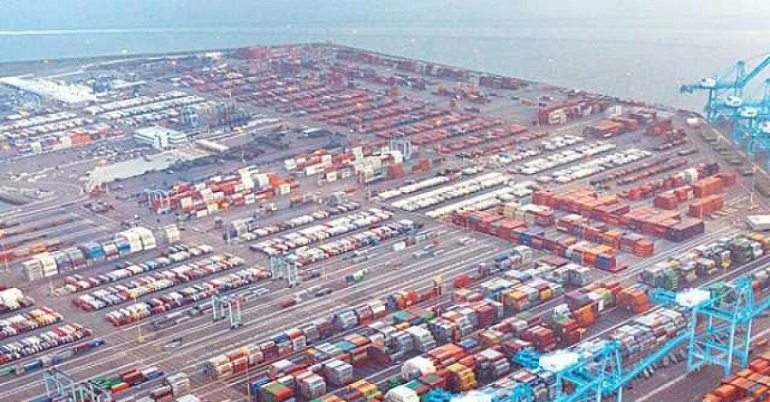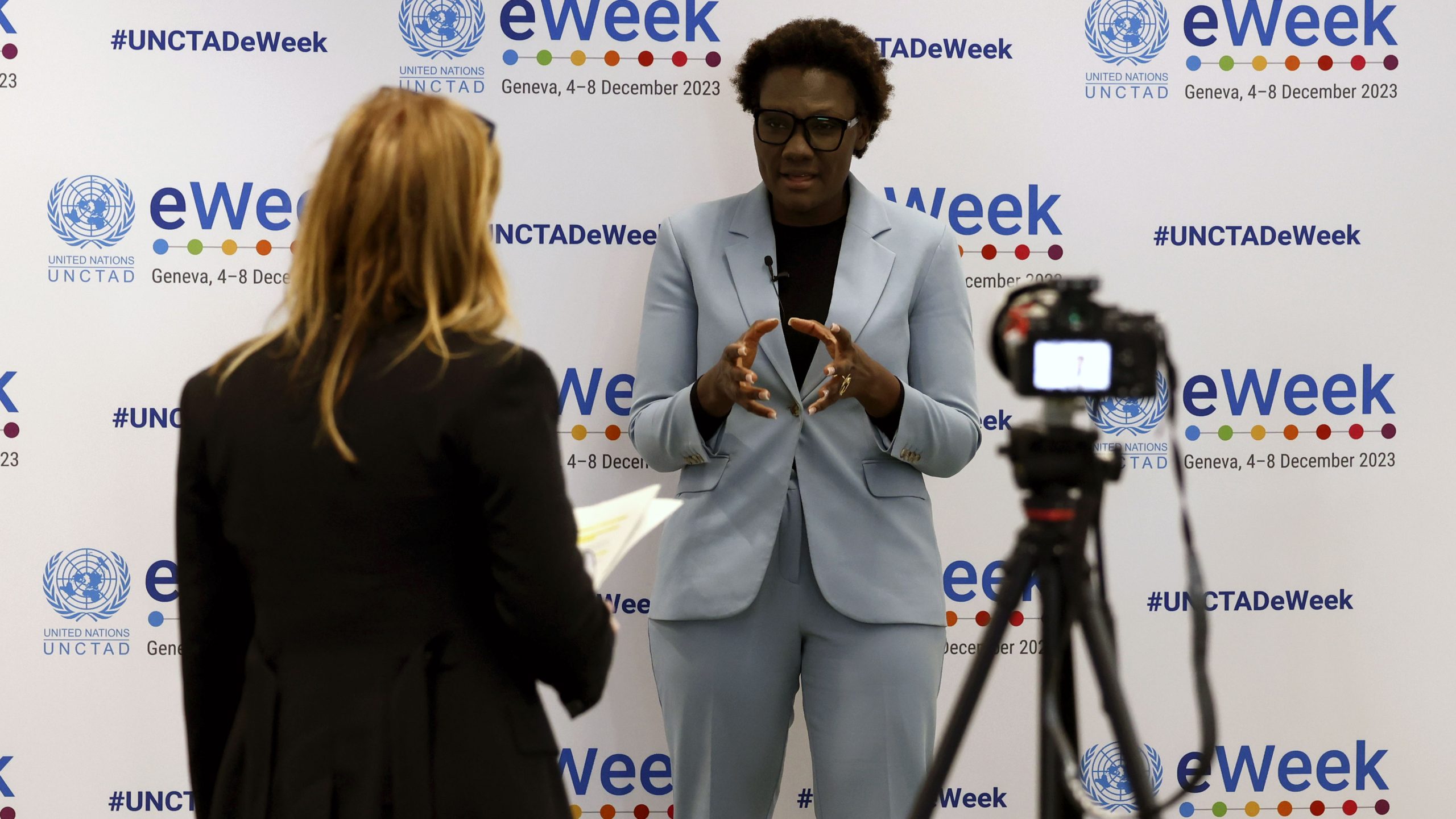Maritime News India : As geopolitical alliances tilt and trade relationships undergo recalibration, the recent resurgence of tariff tensions between India and the United States has reignited debate among diplomats, exporters, economists, and policy institutions. At the heart of this contention is the question: Can trade retaliation secure strategic advantage without causing economic self-harm?
India is facing renewed attention from U.S. policymakers over what they perceive as high tariff barriers. Though India is far from the largest trade surplus holder with the United States, it has been cited as a potential target for reciprocal tariffs due to its average tariff of 52% — a figure that doesn’t reflect nuances like WTO bindings or trade-weighted averages. For India’s maritime economy — which powers over 95% of its external trade by volume — this standoff could have cascading consequences.
This report unpacks the possible repercussions of reciprocal tariffs on India’s port-based economy, identifies vulnerable sectors, assesses port-level risks, and recommends urgent policy recalibrations.
Backdrop: From Strategic Allies to Strategic Tensions
India and the U.S. have cultivated a multi-dimensional relationship — from defense deals and tech alliances to trade agreements and climate partnerships. However, amidst escalating global protectionism, trade remains a sensitive point. While both nations claim to uphold “fair” trade, tariff revisions have sparked unease on both sides.
1. 🌍 Introduction: Context and Urgency
The resurgence of reciprocal tariffs as a geopolitical tool signals a shift from globalism to assertive bilateralism. As the United States recalibrates trade under ‘America First 2.0’, developing economies like India are in a tight spot — balancing strategic autonomy with export dependency.
Despite India’s ongoing economic liberalization and proactive FTAs with the UAE, Australia, and EU, it now faces potential tariff retaliation from the U.S., risking its export momentum at a time when global demand remains uncertain.
2. 🌐 Global Trade Dynamics: The Return of Tariff Nationalism
Since the collapse of the WTO Appellate Body and the weakening of multilateral norms, trade has entered a fragmented, transactional phase. The U.S.–China tariff war normalized aggressive bilateral trade correction. Now, the U.S. is reportedly evaluating high-bound tariff economies — India included — for possible reciprocal hikes.
Trade has become not just an economic issue, but a strategic lever. The U.S. Trade Representative’s office recently listed India’s applied tariffs as a “barrier to market access,” without contextualizing product categories or non-tariff liberalizations India has undertaken.
3. 🇮🇳 The India–US Trade Snapshot
– Total Bilateral Trade (2024): USD 191 billion
– India’s Trade Surplus with the US: USD 36.7 billion
– Key Indian Exports: Pharma, engineering goods, seafood, garments, gems & jewellery
– Average Tariff Rate (Applied): ~13.8% (not 52% as bound under WTO ceilings)
– US Tariff Rate (Applied): ~3.4%
While India does maintain bound tariffs of up to 300% on certain agricultural goods, these are rarely applied. The trade-weighted average tariff is far lower than the political figures being quoted.
4. ⚓ Port-Centric Impacts: Mundra to Tuticorin
India’s coastal economy, comprising 12 major ports and 200+ non-major ports, is directly exposed to international trade volatility. Reciprocal tariffs from the U.S. could disrupt containerized export flows, reduce vessel turnaround, and discourage infrastructure investment.
Potential Port-Wise Risks:
JNPT (Mumbai): Auto parts, pharma — Volume dip, pricing pressure
Mundra (Gujarat): Chemicals, garments — Reduced TEU traffic
Tuticorin (TN): Marine exports — MSME distress
Kolkata (WB): Leather goods — Export halt risk
According to logistics experts, every 1% decline in U.S.-bound container volume could translate into INR 900 crore in lost port-linked revenue annually.
5. 🧳 Exporter Perspective: From MSMEs to Marine
“Reciprocal tariffs are not just numbers — they are pressure points. For Indian exporters already dealing with tight margins and high logistics costs, a tariff hike can make the U.S. market inaccessible overnight.”
— Aziz Rajkotwala, International Market Penetrator
Small and medium exporters, particularly in marine products, garments, and agro-processing, fear losing contracts due to sudden cost disadvantages. States like Kerala, Tamil Nadu, and Odisha — with coastal economies heavily reliant on U.S.-bound seafood exports — are particularly vulnerable.
6. 🧭 Sector Watch: Who Gains, Who Loses?
| Sector | Risk from U.S. Tariffs | Strategic Diversification Possible? |
| Pharma | High | Moderate (EU, LATAM) |
| Seafood | Very High | Low (U.S. is dominant buyer) |
| Apparel | High | Limited (FTA under negotiation) |
| IT Services | Low | Intact (services unaffected) |
| Renewable Energy | Low | Strong EU/ASEAN demand |
Green and digital sectors are safer, but legacy sectors that rely on low-cost exports face critical exposure.
7. 🎙️ Industry Voices: Ground-Level Reality
“India’s maritime infrastructure — from last-mile connectivity to green retrofits — is finally taking shape. A sudden disruption due to retaliatory tariffs could delay progress by years.”
— Bittu Naol, Director, HAP Retrofit & Engineering Infra Pvt. Ltd.
8. 🧭 Policy Recommendations: A Five-Point Action Plan
- Launch a Trade Truth Campaign: Clarify India’s actual applied tariff rates and WTO-compliant regime through formal whitepapers, digital diplomacy, and outreach to U.S. chambers.
2. Accelerate FTA with the U.S.: India must revive discussions around a sectoral FTA covering key areas like digital goods, pharma, textiles, and green tech.
3. Enhance Port-Linked Export Subsidies: Use RoDTEP and MEIS schemes more aggressively for tariff-exposed sectors.
4. Create a Coastal Trade Shock Mitigation Fund: Set up a corpus (INR 5,000 crore) to provide emergency working capital to maritime MSMEs.
5. Leverage Indian Diaspora Trade Networks: Engage the Indian-origin business community in the U.S. to influence policy circles and create resilient buyer-seller channels.
🧾 Navigating Stormy Seas
The language of reciprocal tariffs may be political, but the damage it can inflict is deeply economic. India must act with strategic calm, deploying truthful data diplomacy, safeguarding maritime livelihoods, and diversifying its export narrative beyond traditional dependencies.
India’s aspiration to be a global logistics hub and maritime power demands that it resist turbulence not with retaliation, but with clarity, coalitions, and confident diplomacy.
📚 References
- WTO Trade Policy Review (India, 2023)
2. USTR Report on Trade Barriers (2024)
3. Ministry of Commerce, India – Export Data 2024
4. Industry interviews conducted March–April 2025
5. UNCTAD Port Performance Indicators (2024)
India–U.S. Commercial Cross-Presence: The Numbers Behind the Tariff Tension
While headlines often focus on tariffs, the deeper picture is about economic interdependence. Both nations are intricately tied through corporate presence, investments, and job creation. Here’s a snapshot:
U.S. Companies Operating in India
– Over 650 U.S. companies are actively operating in India.
– Sectors include:
– Tech: Google, Microsoft, Amazon, IBM, Cisco
– Automobile: Ford (past), Tesla (prospective)
– Consumer Goods: PepsiCo, Coca-Cola, Procter & Gamble, Johnson & Johnson
– Pharma & Healthcare: Pfizer, Abbott, MSD
– Finance & Insurance: Citibank, Mastercard, American Express
– Many operate R&D centers, manufacturing hubs, and GICs (Global Innovation/Capability Centers) in cities like Bengaluru, Hyderabad, Pune, and Gurugram.
– Combined investment: Estimated USD 50–60 billion+ over the past 2 decades.
Indian Companies Operating in the U.S.
– More than 200 Indian companies are operating across multiple U.S. states, per the Confederation of Indian Industry (CII) report.
– Key industries:
– IT Services & Consulting: TCS, Infosys, Wipro, HCL
– Pharma: Dr. Reddy’s, Sun Pharma, Lupin
– Manufacturing & Auto: Mahindra, Bharat Forge, Tata Motors
– Hospitality & Retail: Café Coffee Day (past), Patanjali (limited), Zomato (acquisitions)
– Indian firms support over 425,000 direct and indirect U.S. jobs.
– Indian FDI in the U.S. is valued at over USD 12 billion (as per 2023 data).
These statistics underline the symbiotic nature of trade and the need for measured diplomacy, especially in sensitive sectors like pharma, auto, and semiconductors.





One thought on “India in the Crosshairs of Reciprocal Tariffs: A Maritime Nation at Stake”